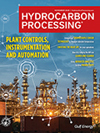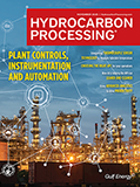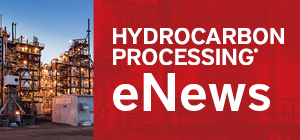Hydrocracking
Zeopore enables breakthrough in hydrocracking by leveraging zeolite mesopore quality
Over recent years, Zeopore has introduced innovative technologies to increase mesoporosity and retain intrinsic zeolitic properties. Now, after having completed a high-throughput testing campaign at a major refining company, Zeopore demonstrates excellent hydrocracking performance in comparison to un-mesoporised zeolite catalysts
Online Exclusive: Advanced hydrocracking unit flow scheme optimization and integration approach to maximize refinery margins for a residue upgrading project
The integration of a solvent deasphalting (SDA) and hydrocracking upgrading complex provides a favorable techno-economic return for residue upgradation at relatively lower capital expenditures vs. other alternatives for a brownfield project.
Digital Exclusive: Refineries’ pandemic turmoil—KNPC’s gasoline demand: Opportunities and challenges
In this exclusive digital article, KNPC provides a comprehensive analysis of the difficulties and challenges that the company experienced during the COVID-19 epidemic and how its refineries adapted during this challenging time.
Technip Energies, LyondellBasell and Chevron Phillips Chemical sign MOU for electric steam cracking furnace
Technip Energies, LyondellBasell and Chevron Phillips Chemical announced the signing of a Memorandum of Understanding for the design, construction and operation of a demonstration unit for Technip Energies’ electric steam cracking furnace technology (eFurnace by T.EN) to produce olefins.
Innovations in industrial zeolite mesoporization deliver robust catalytic benefits in hydrocracking
Zeopore offers post-synthetic mesoporization technologies which remove these hurdles, offering a superior yield of middle distillates and increased activity as compared to both conventional and state-of-the-art mesoporous zeolites.
Select the right capacity control technique for centrifugal compressors: Refinery case studies
The centrifugal compressor has been the workhorse of the oil and gas industry for decades.
Automation: Overhead automation and analytics lead to improved optimization of production and reliability
The efficient operation of crude oil distillation units (CDUs) improves profits and distillate yield while optimizing production costs and reliability.
Fouling monitoring and prediction of heat exchangers via simulations powered by AI-driven models
Hydrocracker units are the most valuable conversion facilities in refineries. The outcome is the conversion of a variety of feedstocks to a range of products—the units that produce those products can be found at various points throughout a refinery.
Chevron Lummus Global announces award for one of the world's largest slurry hydrocracking units
Chevron Lummus Global LLC (CLG) announced Shandong Yulong Petrochemical Co., Ltd. has selected EST, which CLG licenses, for a slurry residue hydrocracking unit in Shandong Province, China.
Technip Energies wins contract from Chevron Phillips Chemical and QatarEnergy for the Golden Triangle Polymers ethane cracker
Technip Energies has been awarded a contract for the supply of proprietary cracking furnaces for the 2 MMtpy ethane cracker for the Golden Triangle Polymers project.

- MOL Group introduces eco-friendly Bag-in-Box packaging for lubricants 12/5
- Honeywell to supply integrated automation systems for flagship UK carbon capture projects 12/4
- Aduro Clean Technologies collaborates with ECOCE to advance plastics recycling in Mexico 12/4
- FincoEnergies launches GoodFuels B15: A reliable and compliant drop-in biofuel for inland shipping 12/4
- DevvStream, Southern Energy Renewables target low-cost, carbon-negative SAF and green methanol 12/4
- AFPM: Revised fuel economy standards would put CAFE back on solid legal footing 12/4




